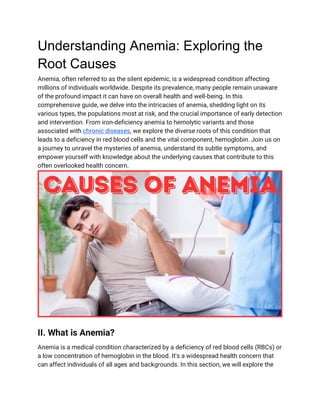Anemia, often termed the silent epidemic, significantly impacts global health by causing red blood cell or hemoglobin deficiencies, leading to various health complications. This guide discusses its types, such as iron-deficiency, vitamin deficiency, and hemolytic anemias, while emphasizing the importance of early detection and tailored treatments for different populations. It also highlights strategies for prevention, including lifestyle changes and management of underlying health conditions.








